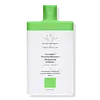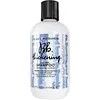What's inside
What's inside
 Key Ingredients
Key Ingredients

No key ingredients
 Benefits
Benefits

 Concerns
Concerns

 Ingredients Side-by-side
Ingredients Side-by-side

Water
Skin ConditioningSodium Lauroyl Methyl Isethionate
CleansingCocamidopropyl Betaine
CleansingSodium Methyl Oleoyl Taurate
CleansingSodium Cocoyl Isethionate
CleansingCoconut Alkanes
EmollientSclerocarya Birrea Seed Oil
HumectantArgania Spinosa Kernel Oil
EmollientPassiflora Edulis Seed Oil
EmollientPlukenetia Volubilis Seed Oil
EmollientPrunus Amygdalus Dulcis Oil
Skin ConditioningRosa Canina Fruit Oil
EmollientGlycerin
HumectantSodium PCA
HumectantCaprylic/Capric Triglyceride
MaskingHelianthus Annuus Seed Oil
EmollientPanthenol
Skin ConditioningGlycol Distearate
EmollientSodium Lactate
BufferingEquisetum Arvense Extract
AstringentPCA
HumectantAlanine
MaskingArginine
MaskingGlycine
BufferingHistidine
HumectantIsoleucine
Skin ConditioningPhenylalanine
MaskingProline
Skin ConditioningSerine
MaskingThreonine
Valine
MaskingAdansonia Digitata Seed Extract
Skin ConditioningTrisodium Ethylenediamine Disuccinate
Prunus Amygdalus Dulcis Seed Extract
Skin ConditioningCitric Acid
BufferingAspartic Acid
MaskingPolyquaternium-10
Polyquaternium-7
Laureth-4
EmulsifyingCoco-Caprylate/Caprate
EmollientCaprylyl Glycol
EmollientSodium Benzoate
MaskingChlorphenesin
AntimicrobialPhenoxyethanol
PreservativeWater, Sodium Lauroyl Methyl Isethionate, Cocamidopropyl Betaine, Sodium Methyl Oleoyl Taurate, Sodium Cocoyl Isethionate, Coconut Alkanes, Sclerocarya Birrea Seed Oil, Argania Spinosa Kernel Oil, Passiflora Edulis Seed Oil, Plukenetia Volubilis Seed Oil, Prunus Amygdalus Dulcis Oil, Rosa Canina Fruit Oil, Glycerin, Sodium PCA, Caprylic/Capric Triglyceride, Helianthus Annuus Seed Oil, Panthenol, Glycol Distearate, Sodium Lactate, Equisetum Arvense Extract, PCA, Alanine, Arginine, Glycine, Histidine, Isoleucine, Phenylalanine, Proline, Serine, Threonine, Valine, Adansonia Digitata Seed Extract, Trisodium Ethylenediamine Disuccinate, Prunus Amygdalus Dulcis Seed Extract, Citric Acid, Aspartic Acid, Polyquaternium-10, Polyquaternium-7, Laureth-4, Coco-Caprylate/Caprate, Caprylyl Glycol, Sodium Benzoate, Chlorphenesin, Phenoxyethanol
Water
Skin ConditioningCetearyl Alcohol
EmollientStearamidopropyl Dimethylamine
EmulsifyingBehentrimonium Chloride
PreservativeCetyl Alcohol
EmollientIsododecane
EmollientStearyl Alcohol
EmollientPhyllanthus Emblica Fruit Extract
HumectantOryza Sativa Seed Protein
AntioxidantHydrolyzed Yeast Protein
Skin ConditioningHydrolyzed Corn Protein
Skin ConditioningOryza Sativa Bran Extract
Skin ConditioningOryza Sativa Extract
AbsorbentPisum Sativum Extract
Skin ConditioningRosmarinus Officinalis Leaf Extract
AntimicrobialHelianthus Annuus Extract
EmollientOcimum Basilicum Hairy Root Culture Extract
Skin ConditioningLaurdimonium Hydroxypropyl Hydrolyzed Keratin
Skin ConditioningHelianthus Annuus Seed Oil
EmollientCocos Nucifera Oil
MaskingHydrogenated Ethylhexyl Olivate
EmollientCaprylyl Glycol
EmollientCetrimonium Chloride
AntimicrobialHydroxyethylcellulose
Emulsion StabilisingEthylhexylglycerin
Skin ConditioningAmodimethicone
Propanediol
SolventGuar Hydroxypropyltrimonium Chloride
Skin ConditioningPolysorbate 60
EmulsifyingIsopropyl Alcohol
SolventMethoxy PEG/PPG-7/3 Aminopropyl Dimethicone
Panthenol
Skin ConditioningC11-15 Pareth-7
EmulsifyingPolysilicone-12
Pentaerythrityl Tetra-Di-T-Butyl Hydroxyhydrocinnamate
AntioxidantHydrogenated Olive Oil Unsaponifiables
EmollientCyperus Esculentus Root Oil
MaskingGlycerin
HumectantTrideceth-12
EmulsifyingOctyldodecanol
EmollientAlcohol
AntimicrobialLaureth-9
EmulsifyingTocopherol
AntioxidantVp/Hexadecene Copolymer
Cystine Bis-Pg-Propyl Silanetriol
Skin ConditioningJojoba Esters
EmollientBHT
AntioxidantCitric Acid
BufferingParfum
MaskingLinalool
PerfumingBenzyl Benzoate
AntimicrobialLimonene
PerfumingHexyl Cinnamal
PerfumingButylphenyl Methylpropional
PerfumingPhytic Acid
Disodium EDTA
Phenoxyethanol
PreservativeSorbic Acid
PreservativeChlorphenesin
AntimicrobialSodium Benzoate
MaskingWater, Cetearyl Alcohol, Stearamidopropyl Dimethylamine, Behentrimonium Chloride, Cetyl Alcohol, Isododecane, Stearyl Alcohol, Phyllanthus Emblica Fruit Extract, Oryza Sativa Seed Protein, Hydrolyzed Yeast Protein, Hydrolyzed Corn Protein, Oryza Sativa Bran Extract, Oryza Sativa Extract, Pisum Sativum Extract, Rosmarinus Officinalis Leaf Extract, Helianthus Annuus Extract, Ocimum Basilicum Hairy Root Culture Extract, Laurdimonium Hydroxypropyl Hydrolyzed Keratin, Helianthus Annuus Seed Oil, Cocos Nucifera Oil, Hydrogenated Ethylhexyl Olivate, Caprylyl Glycol, Cetrimonium Chloride, Hydroxyethylcellulose, Ethylhexylglycerin, Amodimethicone, Propanediol, Guar Hydroxypropyltrimonium Chloride, Polysorbate 60, Isopropyl Alcohol, Methoxy PEG/PPG-7/3 Aminopropyl Dimethicone, Panthenol, C11-15 Pareth-7, Polysilicone-12, Pentaerythrityl Tetra-Di-T-Butyl Hydroxyhydrocinnamate, Hydrogenated Olive Oil Unsaponifiables, Cyperus Esculentus Root Oil, Glycerin, Trideceth-12, Octyldodecanol, Alcohol, Laureth-9, Tocopherol, Vp/Hexadecene Copolymer, Cystine Bis-Pg-Propyl Silanetriol, Jojoba Esters, BHT, Citric Acid, Parfum, Linalool, Benzyl Benzoate, Limonene, Hexyl Cinnamal, Butylphenyl Methylpropional, Phytic Acid, Disodium EDTA, Phenoxyethanol, Sorbic Acid, Chlorphenesin, Sodium Benzoate
 Reviews
Reviews

Ingredients Explained
These ingredients are found in both products.
Ingredients higher up in an ingredient list are typically present in a larger amount.
Caprylyl Glycol is a humectant and emollient, meaning it attracts and preserves moisture.
It is a common ingredient in many products, especially those designed to hydrate skin. The primary benefits are retaining moisture, skin softening, and promoting a healthy skin barrier.
Though Caprylyl Glycol is an alcohol derived from fatty acids, it is not the kind that can dry out skin.
This ingredient is also used as a preservative to extend the life of products. It has slight antimicrobial properties.
Learn more about Caprylyl GlycolChlorphenesin is a synthetic preservative. It helps protect a product against bacteria in order to extend shelf life. In most cases, Chlorphenesin is paired with other preservatives such as phenoxyethanol and caprylyl glycol.
Chlorphenesin is a biocide. This means it is able to help fight the microorganisms on our skin. It is also able to fight odor-releasing bacteria.
Chlorphenesin is soluble in both water and glycerin.
Studies show Chlorphenesin is easily absorbed by our skin. You should speak with a skincare professional if you have concerns about using Chlorphenesin.
Learn more about ChlorphenesinCitric Acid is an alpha hydroxy acid (AHA) naturally found in citrus fruits like oranges, lemons, and limes.
Like other AHAs, citric acid can exfoliate skin by breaking down the bonds that hold dead skin cells together. This helps reveal smoother and brighter skin underneath.
However, this exfoliating effect only happens at high concentrations (20%) which can be hard to find in cosmetic products.
Due to this, citric acid is usually included in small amounts as a pH adjuster. This helps keep products slightly more acidic and compatible with skin's natural pH.
In skincare formulas, citric acid can:
While it can provide some skin benefits, research shows lactic acid and glycolic acid are generally more effective and less irritating exfoliants.
Most citric acid used in skincare today is made by fermenting sugars (usually from molasses). This synthetic version is identical to the natural citrus form but easier to stabilize and use in formulations.
Read more about some other popular AHA's here:
Learn more about Citric AcidGlycerin is already naturally found in your skin. It helps moisturize and protect your skin.
A study from 2016 found glycerin to be more effective as a humectant than AHAs and hyaluronic acid.
As a humectant, it helps the skin stay hydrated by pulling moisture to your skin. The low molecular weight of glycerin allows it to pull moisture into the deeper layers of your skin.
Hydrated skin improves your skin barrier; Your skin barrier helps protect against irritants and bacteria.
Glycerin has also been found to have antimicrobial and antiviral properties. Due to these properties, glycerin is often used in wound and burn treatments.
In cosmetics, glycerin is usually derived from plants such as soybean or palm. However, it can also be sourced from animals, such as tallow or animal fat.
This ingredient is organic, colorless, odorless, and non-toxic.
Glycerin is the name for this ingredient in American English. British English uses Glycerol/Glycerine.
Learn more about GlycerinHelianthus Annuus Seed Oil is the oil derived from the seeds of a Sunflower. Sunflower seed oil is non-fragrant. It is an emollient, meaning it helps to soften the skin.
Sunflower seed oil contains many fatty acids. The fatty acids found in sunflower seeds include (from highest amount to least): linoleic acid, myristic acid, palmitic acid, stearic acid, arachidic acid, oleic acid, and linolenic acid.
These fatty acids help the skin create ceramides. Ceramides play a role in repairing the skin barrier.
Helianthus Annuus Seed Oil helps moisturize the skin. This in turn helps the skin look more rejuvenated and smoother.
Sunflowers are rich in vitamin E.
Historians believe Indigenous cultures of North America domesticated sunflowers before corn. Thus they relied on sunflower oil for a variety of uses. One such use is moisturizing skin and hair.
Sunflower seed oil may not be fungal acne safe. We recommend speaking with a professional if you have any concerns.
Learn more about Helianthus Annuus Seed OilPanthenol is a common ingredient that helps hydrate and soothe the skin. It is found naturally in our skin and hair.
There are two forms of panthenol: D and L.
D-panthenol is also known as dexpanthenol. Most cosmetics use dexpanthenol or a mixture of D and L-panthenol.
Panthenol is famous due to its ability to go deeper into the skin's layers. Using this ingredient has numerous pros (and no cons):
Like hyaluronic acid, panthenol is a humectant. Humectants are able to bind and hold large amounts of water to keep skin hydrated.
This ingredient works well for wound healing. It works by increasing tissue in the wound and helps close open wounds.
Once oxidized, panthenol converts to pantothenic acid. Panthothenic acid is found in all living cells.
This ingredient is also referred to as pro-vitamin B5.
Learn more about PanthenolPhenoxyethanol is a preservative that has germicide, antimicrobial, and aromatic properties. Studies show that phenoxyethanol can prevent microbial growth. By itself, it has a scent that is similar to that of a rose.
It's often used in formulations along with Caprylyl Glycol to preserve the shelf life of products.
Sodium Benzoate is a preservative. It's used in both cosmetic and food products to inhibit the growth of mold and bacteria. It is typically produced synthetically.
Both the US FDA and EU Health Committee have approved the use of sodium benzoate. In the US, levels of 0.1% (of the total product) are allowed.
Sodium benzoate works as a preservative by inhibiting the growth of bacteria inside of cells. It prevents the cell from fermenting a type of sugar using an enzyme called phosphofructokinase.
It is the salt of benzoic acid. Foods containing sodium benzoate include soda, salad dressings, condiments, fruit juices, wines, and snack foods.
Studies for using ascorbic acid and sodium benzoate in cosmetics are lacking, especially in skincare routines with multiple steps.
We always recommend speaking with a professional, such as a dermatologist, if you have any concerns.
Learn more about Sodium BenzoateWater. It's the most common cosmetic ingredient of all. You'll usually see it at the top of ingredient lists, meaning that it makes up the largest part of the product.
So why is it so popular? Water most often acts as a solvent - this means that it helps dissolve other ingredients into the formulation.
You'll also recognize water as that liquid we all need to stay alive. If you see this, drink a glass of water. Stay hydrated!
Learn more about Water